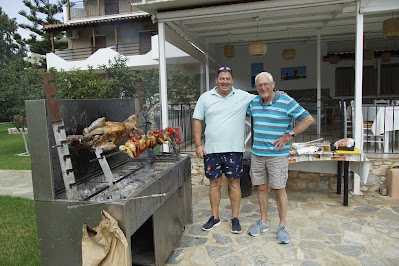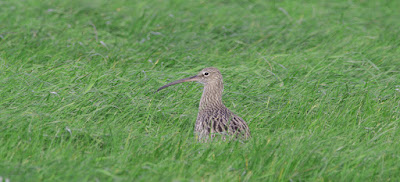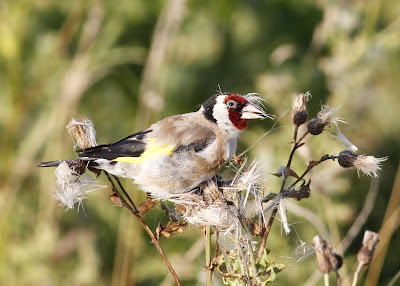The publication of new books was another casualty of world events in 2020 but thankfully we are back on track with the appearance of new titles from a number of publishers. Princeton University Press is in the process of catching up with their releases of 2020 whereby they kindly sent me a review copy to feature on Another Bird Blog.
When summer birding is slow, most bird watchers look for butterflies and other insects where they can use their observational skills in identifying and enjoying yet more colourful creatures. Originally destined for March 2020 comes BRITAIN’S BUTTERFLIES, a Field Guide to the Butterflies of Great Britain and Ireland by David Newland, Robert Still, Andy Swash, and David Tomlinson, a book aimed at beginners, experts and birders alike.
This new, fully revised and updated fourth edition arrives as the latest in the highly successful WildGuides series and is now available to order online or from the publishers and high street book sellers.
Britain's Butterflies - Princeton Press Many readers will already own the third edition of April 2015 and perhaps wonder why they might spend £18 for this latest version. In fact there are a number of innovative and improved features in this 2020 edition not found in previous versions.
A forward by Julie Williams of Butterfly Conservation reminds us that the latest results from the annual UK Butterfly Monitoring Scheme (UKBMS) led by Butterfly Conservation, the UK Centre for Ecology & Hydrology (UKCEH), British Trust for Ornithology (BTO) and Joint Nature Conservation Committee (JNCC) show that 2019 was the best year for butterflies for over 20 years in the UK.
Despite the positive results above, the continuing long-term decline of some butterfly species remains a cause for concern as shown by the 44 years of this project, a study which demonstrates that since the 1970s there are more species in decline than on the increase. Julie borrows the phrase “Insect Apocalypse” that some use to describe the present situation.
And now to to the body of the book.
There are new introductory sections to the main “types” of butterflies that include updated distribution maps together with the latest species’ orders to reflect the latest taxonomy, together with revised sections on recording & monitoring, conservation, and legislation.
The section on butterfly biology is especially useful in giving an insight to the ecology of butterflies, the understanding of which, combined with a detailed chart of favoured habitats, gives enthusiasts a head start.
Similarly the section ‘Where to look for butterflies’ and the accompanying habitat and landscape photographs will surely help to understand and investigate better their chosen branch of citizen science.
For butterfly twitchers a list of key places for rare and localized (sic) butterflies lies at page 30/31 and includes place names and SD grid references, together with a handy coloured graphic depicting favoured habitats to help pinpoint the spot. Useful too that ‘Butterfly watching and photography’ at page 242 describes the dos and don’ts, most of which will be familiar to birders, even if they don’t always follow the rules.
Other features include many splendid stunning colour plates that show typical views of each butterfly species, including the various forms and common aberrations.
Detailed species profiles provide information on status and distribution, including up-to-date maps, and cover adult identification; behaviour; breeding habitat requirements; population and conservation; egg, caterpillar & chrysalis; and caterpillar food plants.
I was impressed by the detailed maps that show the range of each species, if not surprised that too few species make it up here to our Lancashire, NW England list. Average summer temperatures here are often 3-5 °C less than Southern England, a fact that emphasises the dearth of butterfly variety in this and in other parts of Northern England. Scotland makes up for this by possessing a handful of specialities of their own e.g. Scotch Argus, Mountain Ringlet and Pearl-bordered Fritillary.
Britain’s Butterflies contains all 59 butterfly species that breed regularly, as well as four former breeders and a good number of rare migrants from Europe and most likely to be seen in Southern England.

The only jarring note in this book comes in an unconvincing
section entitled ‘climate change and butterflies’ found at Page 245, almost as an afterthought. The authors remind
us of the increase in data collection, the majority by amateur enthusiasts over recent decades, that has resulted in a huge database of
records and information. The text speculates upon the future of butterflies in a number of paragraphs that
contain supposition around ‘may have’, 'may be’ or ‘may also result’
when discussing changes to climate on butterfly populations, food plants, life cycles, and numbers of,
etc.
The authors quote zero scientific evidence on which to base their
vague claims. Nor do they address or reflect upon the many opposing and quite
legitimate opinions that climate change is part of a long-standing cyclical
variation of global weather going back billions of years, variations that butterflies have survived.
The UK continues to build over large swathes of
green land to accommodate a population due to rise to 70 million. If we continue to overpopulate while employing
tons of insecticides and pesticides in what is left of a dwindling and fragmented
countryside and farmland, can we be surprised if insects like butterflies and
many other animals suffer ill effects?
Nevertheless, and despite my minor quibble and unfashionable opinions on climate, this is a super little book. It is of useful proportions to fit the pocket (5.88 in x 8.25 in) and generous content by way of 256 pages, 600 + colour photos and 10 line illustrations.
British Butterflies is set out in an organised, logical and accessible design, and finished to the high quality we expect of Wildguides. Every inch of space is used to advantage so as to educate and inform the reader, right down to the inside flap that holds a key to maps & codes, a 150 mm ruler, and a “quick” index.
The text is precise, the graphics detailed and well defined. The photographs are superb, far better than the average images of butterflies that I capture via my expensive DSLR.
At £17.99 Britain’s Butterflies is great value. Less than a tank full of unleaded buys a book to take the reader an awfully long way along the road to discovering butterflies.
The book is produced in association with Butterfly Conservation therefore it seems likely that the organisation will benefit to some degree from sales, in itself a good enough reason to invest in this edition.
==============================
“Butterflies are the best-studied UK insects by far, providing vital insights into the changing state of wider biodiversity and the ecosystem services that depend upon it, as well as an important opportunity for the general public to engage with conservation, citizen science and the natural world. Restoring butterfly populations across the UK, in gardens, urban green spaces and the countryside, is likely to bring substantial benefits to innumerable other species but also to the health, wealth and well-being of the human population.”
"You can leave a patch of grass to grow long - this helps butterflies lay eggs in the grass."
"Try not to use pesticides or insecticides - these can kill butterflies as well as other insects."
"Avoid using peat compost. Peat is being taken away from natural peat bogs which is where many animals and plants live, and can affect the wider eco-system which the butterfly relies on. Instead use one of the many alternatives available."
"Grow as many flowers as possible in the springtime".
==============================



































































.JPG)







.jpg)











